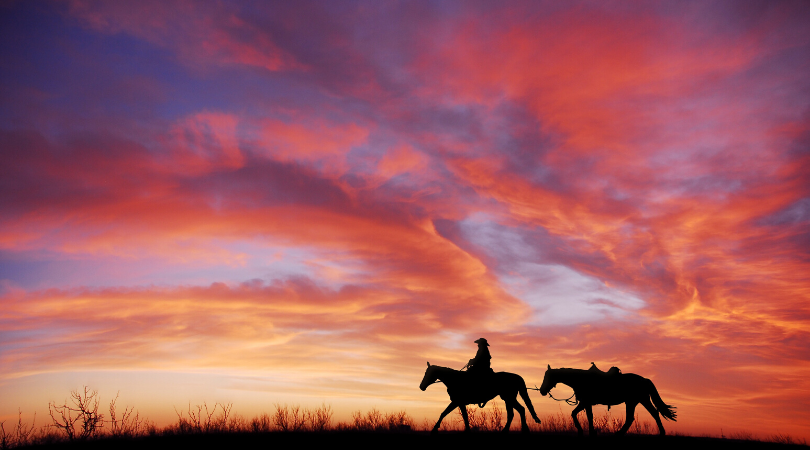Agriculture is steeped in tradition. These traditions serve as a source of pride and continuity which help make us who we are in agriculture. However, these same traditions create a paradox of sorts when it comes to managing the business of ranching. Balancing respect for traditions and fostering innovation can be tricky to navigate. Another complicating factor in ranching is that business leadership is often slower to transition than most. Generally this is because the decision making is in the hands of a generation that would have retired 10-20 years ago in any other industry. This generation is often making decisions from a place of risk minimization … rightly so from their perspective. However, when Junior is wanting to expand the business to support a growing family this can pit two very different business strategies against each other which often creates conflict on the family ranch.
I think there are some traditions on a ranch that need to be challenged to position the ranch to be successful in the coming decades. Each operation will need to find its own balance between tradition and innovation. Having clear goals will help determine the appropriate balance of risk management and growth strategy for the business.
Below is a short list of common ranch traditions that I suggest you look at and examine why you are doing what you are doing, then put some numbers to what it might look like if you did things differently. I’m certainly not suggesting everyone must change these traditions but have a discussion with your team about the pros and cons of staying the same or changing.
- Grazing management
I see far too many ranches where tradition determines the grazing plan rather than good planning. Effective grazing management is one of the most powerful economic levers you can pull. Does each pasture get adequate rest for plant recovery after every grazing? Are your animals in a pasture long enough to allow a second bite? I have never visited a ranch that couldn’t improve their grazing which would allow the ranch to increase carrying capacity, often as much as doubling historic stocking rates, while still improving the condition of the land. Often the driving force for not improving grazing practices involve hanging on to old traditions. Many equate better grazing with more fences or more work. Neither of these must be true. - Needing lots of stuff to ranch
Here is an interesting thought experiment. Make a list of every piece of equipment on the ranch and what it would be worth if sold today. Total up the dollars and now pretend you have that money as cash in your hand and you have no equipment. Paint a picture in your mind of the type of business you want to build. Now, ask the question, “How would we best deploy the capital we now have to create the business we want?” Would you spend it all or save some for a cushion? When times are good on the ranch, we often fall into the trap of upgrading tools that make our lives easier. It is very difficult to go backwards in creature comforts once we step forward. However, from the numbers I’ve seen it is the rare piece of equipment that creates more cash flow than it costs in depreciation and repairs. Tradition might lead us to believe that we need all this stuff to ranch, but economics might be telling us that all this stuff is part of what makes ranching so financially difficult. - We should be running cows
But we have always run cows! What is the purpose of your ranch? Is it to create opportunities for owners to do the things they enjoy or is it to create cash flow and profit to support the owners and provide opportunities for others? Might these two things be in contrast? I’m not saying you can’t run cows and be profitable, but often I observe ranchers who see no other alternative to the current enterprise structure on the ranch. I also don’t believe it is a problem if ownership sees the ranch as a place to allow them to do the things they enjoy – such as running cows. I do see a conflict when the ranch isn’t creating the outcomes required and people are unwilling to look beyond traditional enterprises. Might it be that the ranch could be an even more enjoyable place if it were highly profitable?
Following that line of thought, what other traditions should be challenged on your ranch? Which traditions must be held on to? There are some traditions that are core to who we are, let’s be sure we don’t jeopardize those in pursuit of profit. Balancing the paradox of tradition and innovation is part of what makes this business so interesting.




Dallas, that was a clear and thought-full article.
Love this open-minded approach to ranching. Thanks Dallas. Always appreciate what you bring to the table.
Should horses be included in the “needing stuff to ranch” section?
For so long we tried to justify buying a skid steer. Now we rent the size we need once or twice a year. No payments, no repairs no stress of a monthly payment.
Should we be tagging at calving? We will be challenging that tradition this year!
I plan to challenge that one this year also….if mama knows her calf, why should I try to keep track of it last year we tagged for the first cycle, starting at 1(not the mothers number) n I think I went back to my calf book only 2 times and just because it was there.